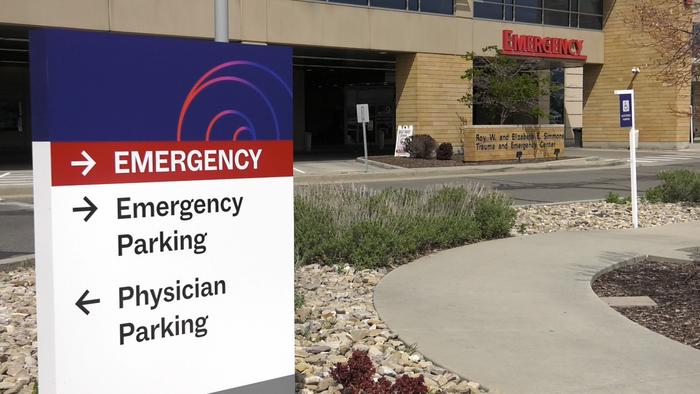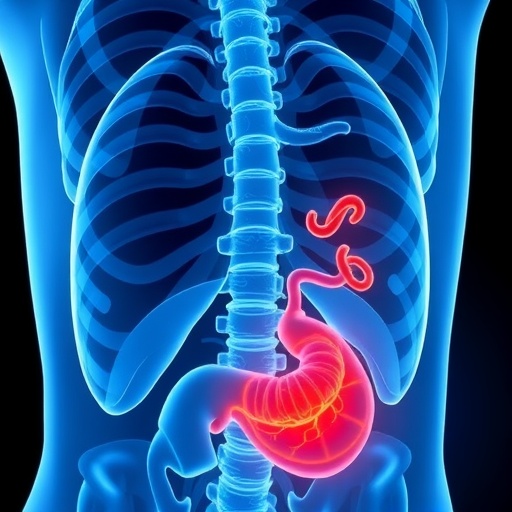In a groundbreaking study led by researchers at Intermountain Health in Salt Lake City, the implementation of a sophisticated electronic clinical decision support tool has demonstrated a remarkable reduction in mortality rates among emergency department patients diagnosed with pneumonia. This advancement holds particular promise for vulnerable populations experiencing socioeconomic hardships, where disparities in healthcare outcomes have historically been pronounced. The study’s compelling findings highlight the potential for artificial intelligence-driven technologies, like this decision support system, to significantly enhance clinical care and equity in healthcare delivery.
Pneumonia, a pervasive and potentially fatal infection of the lungs, continues to represent a substantial global health burden. Characterized by inflammation of the lung parenchyma and compromised respiratory function, it remains one of the leading causes of death worldwide, responsible for millions of fatalities annually. In the United States alone, approximately 150,000 individuals are hospitalized each year due to pneumococcal pneumonia, with mortality rates approximating five percent. These stark statistics underscore the urgent need for interventions that improve diagnostic accuracy and therapeutics in acute care settings.
Certain demographics bear a heightened risk of developing pneumonia or experiencing severe complications, including young children, the elderly, and those with chronic medical conditions such as chronic obstructive pulmonary disease (COPD), diabetes, or immunocompromised states. Beyond these biological risk factors, socioeconomic determinants critically influence disease prevalence and outcomes. Populations with limited financial resources frequently encounter barriers to accessing timely medical care, adhere less consistently to prescribed therapies, and often reside in environments conducive to respiratory infections. Accordingly, this multifaceted disease disproportionately affects socioeconomically disadvantaged communities, perpetuating cycles of poor health.
To address these disparities and enhance clinical decision-making, Intermountain Health developed ePneumonia in 2011—an integrated, AI-enhanced clinical decision support platform designed to be embedded seamlessly into routine emergency department workflows. Utilizing a combination of comprehensive patient data—including prior medical history, vital signs recorded upon emergency presentation, laboratory findings, and detailed chest imaging analyses—ePneumonia employs advanced predictive algorithms to guide clinicians in diagnosing pneumonia accurately and tailoring appropriate treatment regimens.
Jason R. Carr, MD, a pulmonary medicine specialist and lead investigator in this study, emphasizes the transformative impact of this technology: “With ePneumonia, we are able to flatten mortality disparities across diverse social groups by providing consistent, evidence-based guidance that mitigates the variability in clinical assessments.” This assertion reflects the potential of ePneumonia not only to save lives but to do so equitably, regardless of patients’ socioeconomic backgrounds.
The Intermountain Health team recently presented their study results at the prestigious ATS 2025 International Conference held in San Francisco, underscoring the growing recognition of artificial intelligence’s role in revolutionizing respiratory medicine. Their research specifically examined the influence of ePneumonia on patient outcomes stratified by the Area Deprivation Index (ADI), a composite measure quantifying socioeconomic disadvantage based on cumulative metrics including poverty levels, educational attainment, housing quality, and employment status. Individuals with high ADI scores often face systemic barriers that compromise health outcomes.
Utah, the state where Intermountain Health operates, contains vast rural regions with pockets of economic deprivation, making it an ideal environment for studying the intersection of socioeconomic factors and pneumonia care. Over a three-year period from June 2016 through June 2019, researchers tracked the clinical impact of ePneumonia’s utilization in 16 community hospitals, analyzing records of adults diagnosed in emergency departments or upon hospital discharge with pneumonia or related conditions such as sepsis and respiratory failure confirmed radiographically.
The study’s results were unequivocal: the deployment of ePneumonia correlated with a statistically significant decrease in mortality among patients with elevated ADI scores, indicating that this tool effectively narrows the gap in pneumonia-related death rates between disadvantaged populations and the general patient population. This finding suggests that ePneumonia’s algorithmic assessments mitigate unconscious biases that clinicians may harbor—biases that can inadvertently influence diagnostic rigor or therapeutic intensity.
Despite the promising nature of these preliminary findings, both Dr. Carr and Dr. Dean caution that further research is needed to confirm and expand upon these results. Larger-scale studies encompassing diverse healthcare settings and populations will be vital to validating ePneumonia’s role in revolutionizing pneumonia management and guiding policy on incorporating such tools more broadly in clinical practice.
Ultimately, this study offers a compelling vision for the integration of advanced electronic decision support systems within emergency medicine, particularly for tackling infectious diseases with entrenched health disparities. By harnessing the power of big data, machine learning, and clinical expertise, technologies like ePneumonia have the potential to democratize high-quality care, reduce mortality, and enable physicians to overcome inherent biases—ushering in a new era of precision medicine that benefits all patients, regardless of socioeconomic background.
Subject of Research: People
Article Title: Electronic Clinical Decision Support Tool Dramatically Reduces Pneumonia Mortality in Socioeconomically Disadvantaged Patients
News Publication Date: Not specified
Web References: https://mediasvc.eurekalert.org/Api/v1/Multimedia/aecdf5ed-ad81-47d6-8970-04505072f2d8/Rendition/low-res/Content/Public
Image Credits: Intermountain Health
Keywords: Pneumonia, Emergency medicine, Clinical decision support, Artificial intelligence, Socioeconomic disparities, Respiratory disorders
Tags: artificial intelligence in healthcarechronic conditions and pneumoniaclinical decision support toolsemergency department pneumonia treatmenthealth equity in clinical carehealthcare disparities in pneumoniaimproving pneumonia diagnosticspneumonia decision support systempneumonia mortality reductionpneumonia risk factorssocioeconomic factors in health outcomesvulnerable populations in healthcare





